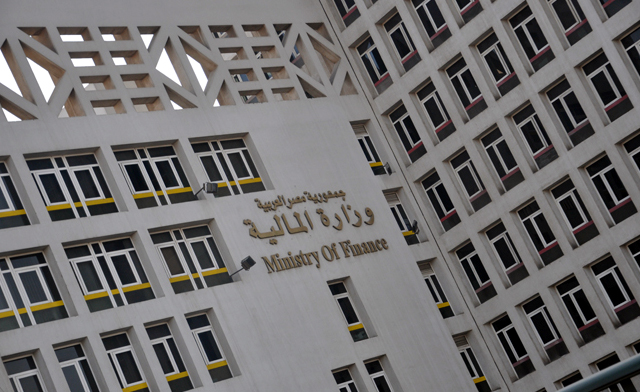
Daily News Egypt
By Waleed Abdel Azim
The domestic debt has been growing at a quickening pace since the January 25 Revolution, and social spending rates have increased in the budgets of the past two fiscal years.
The government took fiscal measures that exacerbated the already precarious economic conditions in an attempt to cover the record-breaking deficit, but these measures accelerated the growth of the domestic debt and placed pressure on the levels of liquidity available in the market.
Last year the Ministry of Finance expanded its activities in issuing short-term treasury bills in an unprecedented manner in order to cover the deficit and meet prior financial obligations made to domestic lenders. This raised interest rates on government debt instruments to historic levels, making the possibility of issuing longer-term treasury bonds difficult in light of the rise in the cost of debt.
The ratio of domestic debt to GDP rose 3 per cent bringing it to 79 per cent, whereas at the conclusion of the fiscal year that preceded the Revolution it was at 67per cent.
The domestic debt leaped EGP 168 billion between March 2011 and March 2012, bringing the total to EGP 1.1 trillion, an 18 per cent increase. The 2010-2011 fiscal year, which witnessed the Revolution, experienced a 19 per cent increase. In comparison, the ratios of the two fiscal years previous to that hovered around 16 per cent and the percentage growth in the domestic debt during the 2007-2008 fiscal year was only 1.3 per cent.
Economic expert Gamil Zahdi pinned the increases on the unrest.
“Factious protests played a part in exacerbating the debt and part of reducing the risk of internal debt relies on a reduction in the amount of factious demands,” he said.
During the past eight months, the state witnessed protests in all corners of the country in which government workers demanded job security, higher wages and better working conditions. Meeting these demands cost the treasury dearly, reflected in the spike in the budget deficit which exceeded its allotted amount by EGP 30 billion, according to official leaks from the Freedom and Justice Party regarding the past fiscal year’s final account balance.
Interest rates on treasury bills jumped from 12 per cent to 16 per cent during the months immediately following the revolution.
Zahdi explained that the effect of the interest rates on the treasury bills and bonds, which surged from 12 per cent to 16 per cent during the last period, was highly evident in the swelling of the domestic debt. Banks that contributed to these financial instruments searched for the highest interest rate. This forced the government to raise the rate of return in order to attract business from the banks, which in turn caused the domestic debt to balloon.
The high-yield rate on treasury bills and loans placed greater pressure on the general budget, to the extent that 25 per cent of its spending had to be allocated to covering the rising borrowing costs. These expenses equalled EGP 133 billion, of which EGP 98 billion went to local creditors.
The government attempted to approach this year’s general budget from a different tack, saying it was in need of a loan valued at EGP 20 billion until June 2013 and that it would issue bonds and bills that would raise EGP 145 billion and EGP 81 billion respectively.
In this manner, bonds will comprise 54.5 per cent of the domestic debt for the current fiscal year, compared to the end of the last fiscal year when it comprised merely 20 per cent.
Wael Ziada, head of research at EFG-Hermes, believes the new approach towards changing the debt structure will have the positive effect of easing the burden of repaying the debt in the short term, contrary to what happened the previous fiscal year.
This approach will carry maturities forward to periods beyond the current liquidity crisis, he said. In order to succeed, the yield-rate on bonds must be floated and not be locked-in for long lending periods as it is now.
Three months into the new approach, the return rate has not shown any noticeable signs of change, however. Thus, enacting real change may require more than merely altering the timetables of the government’s debt.
Analysts blame state policies for the debt’s volume and have demanded radical changes in order to reduce the risk of the public debt.
Karim Hassanein, a professor of Economics and Management at October 6 University, attributes part of the problem facing the general budget to “profuse subsidising”.
The government allocates almost a third of budget spending for subsidising a number of commodities and services. Of these, fuel is the most heavily subsidised, accounting for EGP75 billion of the EGP 145.8 billion in total subsidies.
Hassanein says the government had already agreed on a plan to reduce the domestic debt to GDP ratio in 2008, but the global economic crisis derailed its implementation. The consequential rise in global prices led the Egyptian government to increase subsidies to prevent commodities from becoming inaccessible to citizens, further compounding debts.
Analysts contend that the current system of subsidies benefits the impoverished least of all, and that directing a portion of the subsidies to the most vulnerable groups could vastly limit government spending, and help to significantly reduce the budget deficit and the debt.







